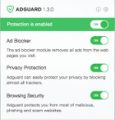What is MicroClick
MicroClick is supposed to be a program that will improve the browsing experience, but it is adware. Adware is a type of software whose motive is to generate revenue for its author. It have various ways of earning by displaying the ads forcibly to its victims. Adware can generate pop-up deals, display unsolicited advertisements, change the victim’s internet browser settings, or reroute the victim’s internet browser to unwanted websites. Aside from causing unwanted ads and browser redirections, it also can slow down the MAC OS.
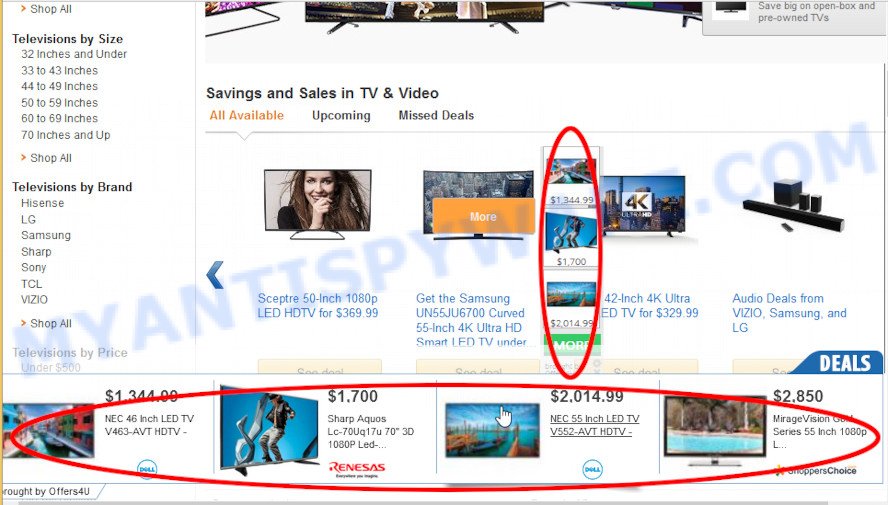
Unwanted ads
Another reason why you need to delete adware is its online data-tracking activity. Adware can be used to gather and transmit privacy data without your knowledge. Adware software has the ability to track information about web-pages visited, internet browser and system information, and your MAC system IP address.
If your web-browser has been affected by the adware software, you must have finished the steps listed below. Once you’ve removed MicroClick from your MAC OS by following our step-by-step tutorial, make sure not to commit the same mistakes again in the future.
How does MicroClick get on your Apple Mac
Adware usually come bundled with free applications that downloaded from the Net. Which means that you need to be proactive and carefully read the Terms of use and the License agreement properly. For the most part, adware and PUPs will be clearly described, so take the time to carefully read all the information about the software that you downloaded and want to install on your machine.
Threat Summary
| Name | MicroClick |
| Type | adware software, PUP (potentially unwanted program), pop up virus, pop ups, popup advertisements |
| Symptoms |
|
| Removal | MicroClick removal guide |
How to Remove MicroClick adware software (removal steps)
There are several steps to removing the MicroClick adware, because it installs itself so deeply into the Apple Mac. You need to remove all suspicious and unknown software, then remove malicious extensions from the Mozilla Firefox, Safari and Chrome and other internet browsers you have installed. Finally, you need to reset your browser settings to remove any changes the adware software has made, and then scan your MAC with MalwareBytes AntiMalware (MBAM) to ensure the adware is fully removed. It will take a while.
To remove MicroClick, perform the following steps:
- Remove profiles created by MicroClick
- Uninstall MicroClick related apps through the Finder
- Remove MicroClick related files and folders
- Scan your Mac with MalwareBytes
- Remove MicroClick from Safari, Chrome, Firefox
- How to stay safe online
- Finish words
Remove profiles created by MicroClick
MicroClick can install a configuration profile on the Mac system to block changes made to the browser settings. Therefore, you need to open system preferences, find and delete the profile installed by the adware.
Click Apple menu ( ![]() ) > System Preferences.
) > System Preferences.
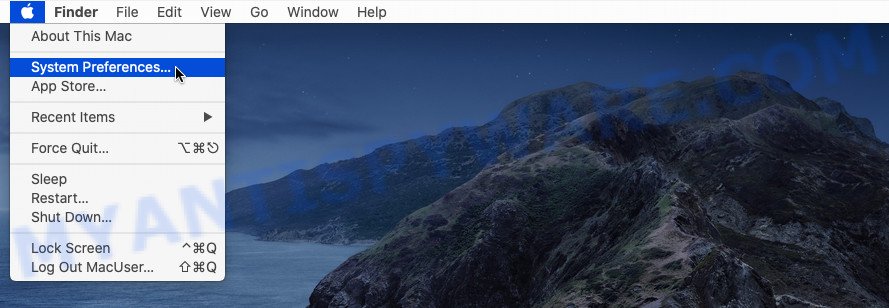
In System Preferences, select Profiles. if there is no Profiles in the list of preferences, that means there are no profiles installed on the Mac device. If there is Profiles in the list, then click on it, then select a profile associated with MicroClick.
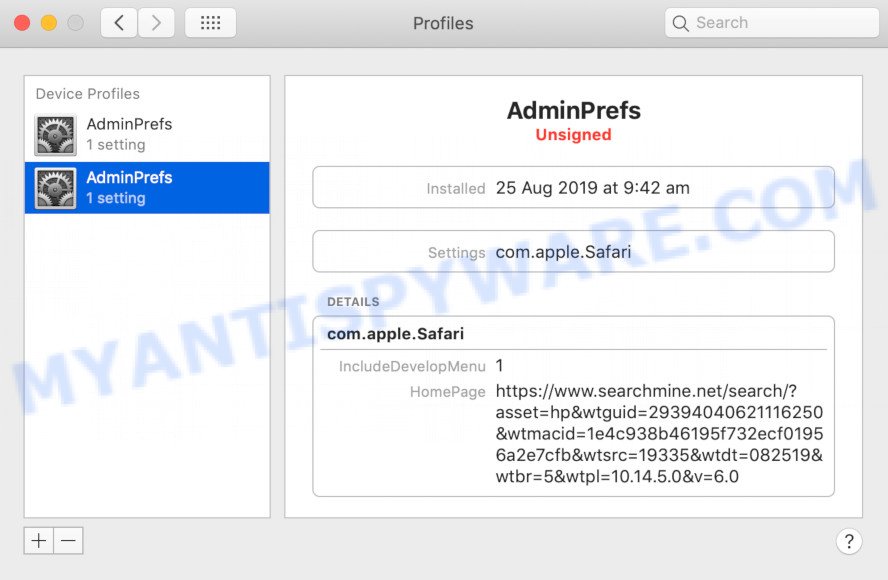
To delete a malicious profile, click on the minus button ( – ) located at the bottom-left of the Profiles screen.
Uninstall MicroClick related apps through the Finder
Some of adware, PUPs and browser hijackers can be uninstalled using the Move to Trash utility that is located in the Finder. So, if you’re running any version of Apple Mac and you have noticed an unwanted program, then first try to remove it through the Finder.
Open Finder and click “Applications” as shown on the screen below.
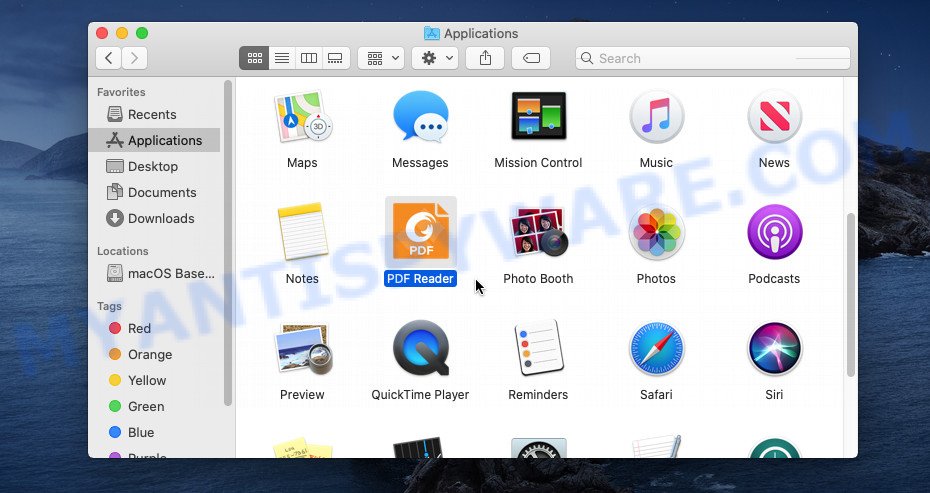
You will see a list of applications installed on your computer. We recommend to pay maximum attention to the program you installed last. Most probably, it’s the MicroClick adware software. If you’re in doubt, you can always check the program by doing a search for her name in Google, Yahoo or Bing.
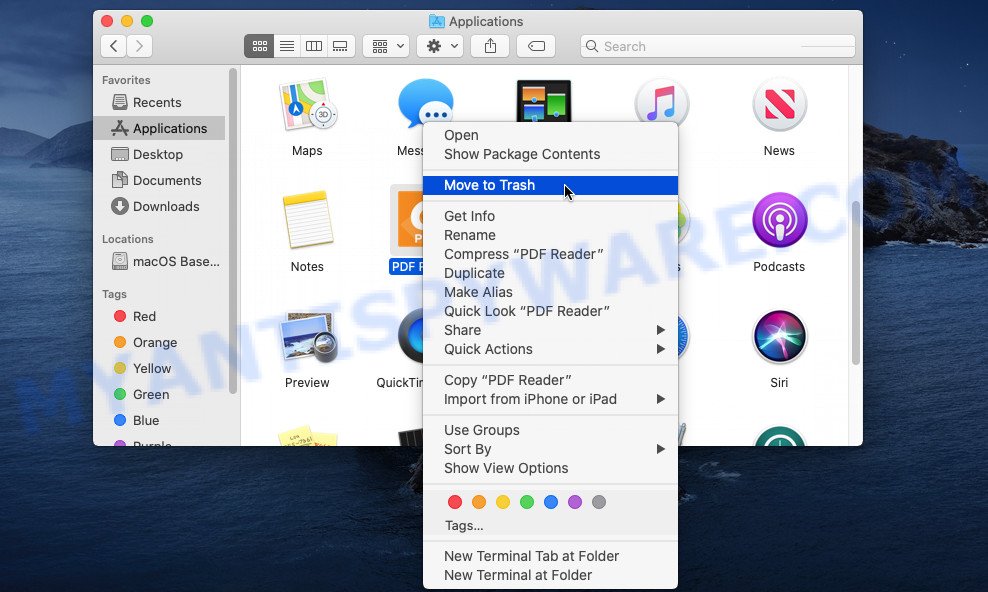
Once the application which you need to uninstall is found, simply right click on its name, and select “Move to Trash”.
Don’t forget, choose Finder, then “Empty Trash”.
Remove MicroClick related files and folders
Now you need to try to find MicroClick related files and folders, and then delete them manually. You need to look for these files in certain directories. To quickly open them, we recommend using the “Go to Folder…” command.
Click on the Finder icon. From the menu bar, select Go and click “Go to Folder…”. As a result, a small window opens that allows you to quickly open a specific directory.

Check for MicroClick generated files in the /Library/LaunchAgents folder

In the “Go to Folder…” window, type the following text and press Go:
/Library/LaunchAgents
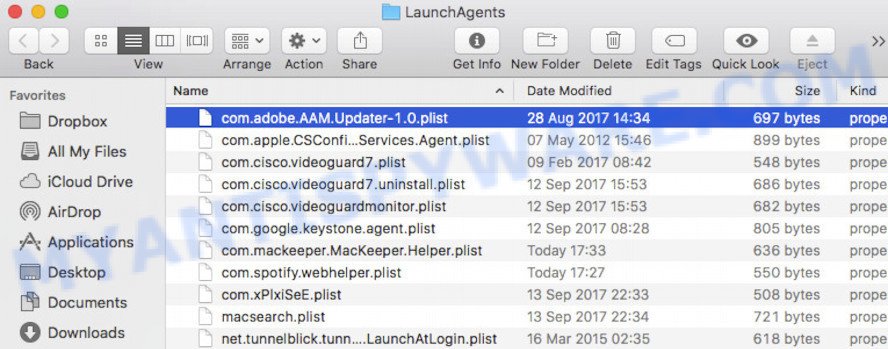
This will open the contents of the “/Library/LaunchAgents” folder. Look carefully at it and pay special attention to recently created files, as well as files that have a suspicious name. Move all suspicious files to the Trash. A few examples of files: macsearch.plist, installapp.plist, MicroClick.plist, com.machelper.plist and search.plist. Most often, adware software, potentially unwanted programs and browser hijackers create several files with similar names.
Check for MicroClick generated files in the /Library/Application Support folder

In the “Go to Folder…” window, type the following text and press Go:
/Library/Application Support
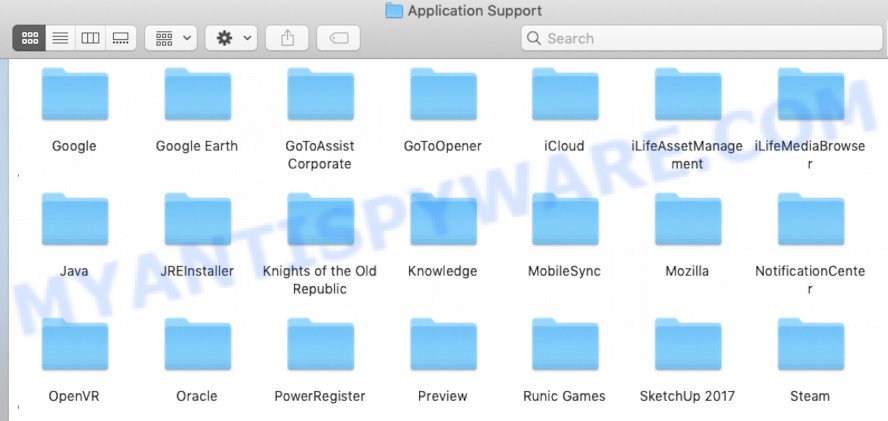
This will open the contents of the “Application Support” folder. Look carefully at its contents, pay special attention to recently added/changed folder. Move all suspicious folders to the Trash.
Check for MicroClick generated files in the “~/Library/LaunchAgents” folder

In the “Go to Folder…” window, type the following text and press Go:
~/Library/LaunchAgents

Proceed in the same way as with the “/Library/LaunchAgents” and “/Library/Application Support” folders. Look for suspicious and recently added files. Move all suspicious files to the Trash.
Check for MicroClick generated files in the /Library/LaunchDaemons folder
In the “Go to Folder…” window, type the following text and press Go:
/Library/LaunchDaemons

Carefully browse the entire list of files and pay special attention to recently created files, as well as files that have a suspicious name. Move all suspicious files to the Trash. A few examples of files to be deleted: com.MicroClick.plist, com.machelper.plist, com.macsearch.plist, com.installapp.plist and com.search.plist. In most cases, potentially unwanted programs, adware and browser hijackers create several files with similar names.
Scan your Mac with MalwareBytes
If you’re still having problems with the MicroClick removal or just wish to check your Mac computer occasionally for adware software and other malware, then download MalwareBytes. It’s free for home use, and detects and removes various undesired applications that attacks your computer or degrades machine performance. MalwareBytes Free can remove potentially unwanted programs, browser hijackers, adware software and toolbars as well as malware, including ransomware and trojans.
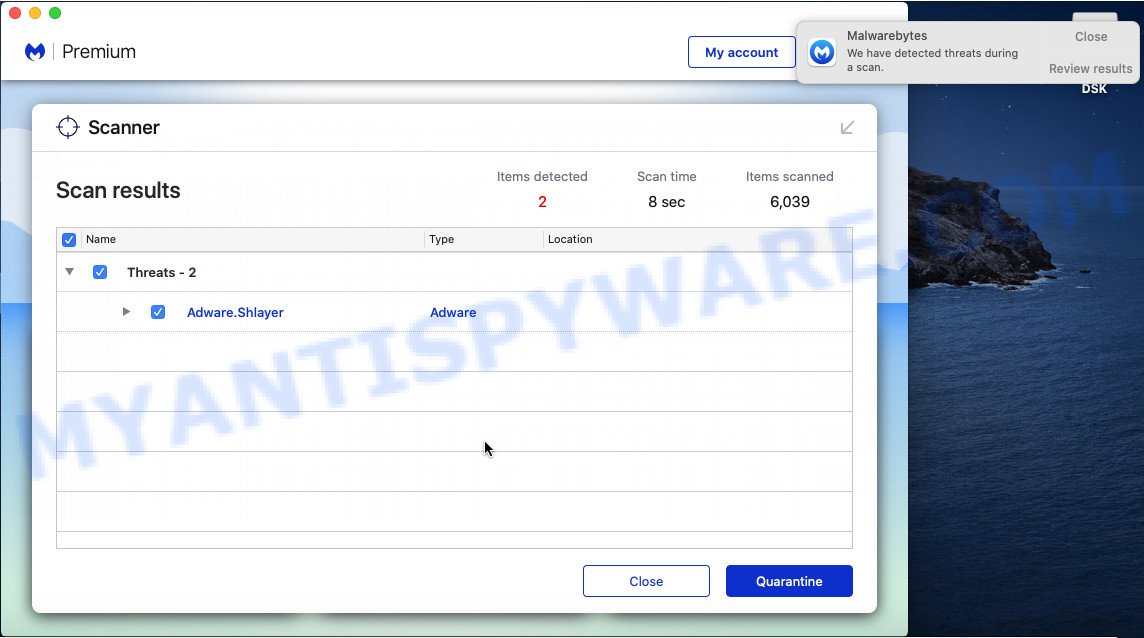
Installing the MalwareBytes AntiMalware is simple. First you’ll need to download MalwareBytes Anti Malware (MBAM) on your Microsoft Windows Desktop from the link below.
21024 downloads
Author: Malwarebytes
Category: Security tools
Update: September 10, 2020
Once downloading is complete, run it and follow the prompts. Click the “Scan” button to perform a system scan with this utility for the MicroClick adware. A scan may take anywhere from 10 to 30 minutes, depending on the number of files on your MAC system and the speed of your machine. During the scan MalwareBytes AntiMalware will scan for threats present on your MAC OS. When you’re ready, click the “Quarantine” button.
The MalwareBytes Free is a free program that you can use to delete all detected folders, files, malicious services and so on.
Remove MicroClick from Safari, Chrome, Firefox
If you’re still seeing MicroClick that won’t go away, you might have malicious plugins installed on your internet browser. Check your internet browser for unwanted addons using the steps below.
You can also try to get rid of MicroClick by reset Chrome settings. |
If you are still experiencing issues with MicroClick adware removal, you need to reset Mozilla Firefox browser. |
|
How to stay safe online
To put it simply, you need to use an ad-blocking utility (AdGuard, for example). It will stop and protect you from malicious web-pages, unwanted ads and pop-ups. To be able to do that, the ad-blocker program uses a list of filters. Each filter is a rule that describes a malicious website, an advertising content, a banner and others. The ad blocker program automatically uses these filters, depending on the web pages you’re visiting.
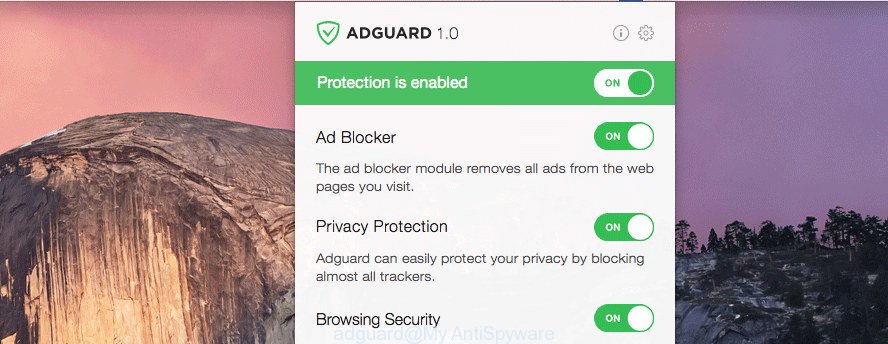
Please go to the following link to download AdGuard.
3782 downloads
Author: © Adguard
Category: Security tools
Update: January 17, 2018
After the download is finished, run the downloaded file. The “Setup Wizard” window will show up on the computer screen.
Follow the prompts. AdGuard will then be installed. A window will show up asking you to confirm that you want to see a quick guide. Press “Skip” button to close the window and use the default settings, or press “Get Started” to see an quick instructions which will assist you get to know AdGuard better.
Each time, when you start your computer, AdGuard will run automatically and stop undesired pop ups, block malicious and misleading web-pages.
Finish words
Once you’ve finished the step-by-step instructions above, your MAC OS should be free from MicroClick and other malware. The Mozilla Firefox, Google Chrome and Safari will no longer redirect you to various unwanted web-sites and online ads. Unfortunately, if the steps does not help you, then you have caught a new adware software, and then the best way – ask for help here.

